NVIDIA & EVGA GeForce GTX 670 2GB Video Card Review
Temperature & Noise Testing
The GeForce GTX 670 has had some of the power circuitry moved to the other side of the board, so we wanted to check out the temperatures back there to see what was happening.
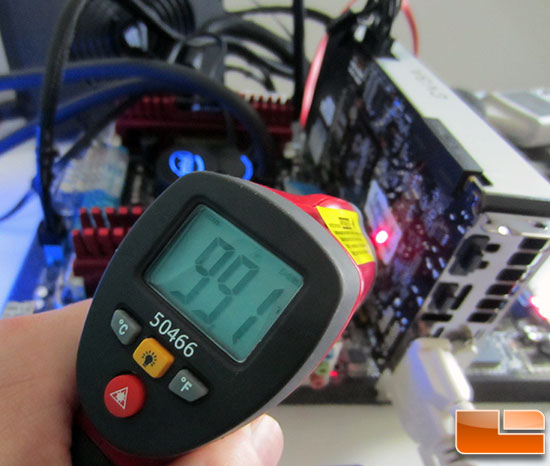
During benchmarking we found the back of the GeForce GTX 670 got up to 99C (210F) on our open air test bench with the processor being water cooled. Since we were liquid cooling the processor we didn’t have much air circulated behind the card, so it got pretty toasty on the exhaust side of the PCB.
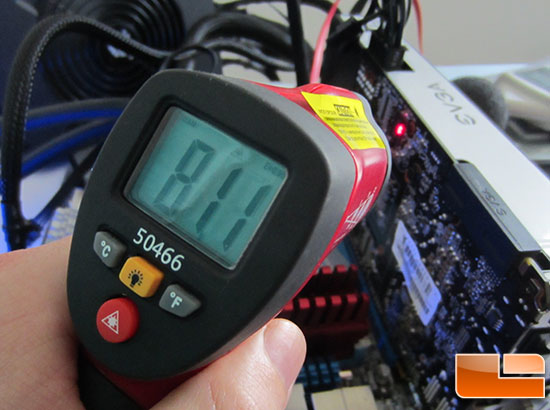
The Hynix GDDR5 memory chips are running over 6GHz and we found them reaching around 79-81C during gaming and benchmarking. We contacted NVIDIA with concerns about these temperatures and we were told that the modules are rated for operation in environments up to 115C and that we need not be concerned.
“Hynix spec says the memory can run at up to 115C max operating temp. So at 82C, youre nowhere near the max temp the modules are rated for. If the modules were overheating youd be seeing artifacts and other stability issues.” – NVIDIA PR
Since video card temperatures and the heat generated by next-generation cards have become an area of concern among enthusiasts and gamers, we want to take a closer look at how the graphics cards do at idle, during gaming and finally under a full load.

We recorded temperatures during several scenarios on each of the cards we tested today and the benchmark results are shown above. The NVIDIA GeForce GTX 670 had an idle temperature of 34C, while the EVGA GeForce GTX 670 SC was 33C. These two cards were 1C different at all test settings despite the EVGA card being overclocked. It looks like the high-flow exhaust bracket that comes with the EVGA GeForce GTX 670 SC really works as the temperatures were lower and so was the noise since the fan wasn’t spinning as fast due to the lower temperatures. The GPU core temperatures don’t look bad on the GeForce GTX 670!
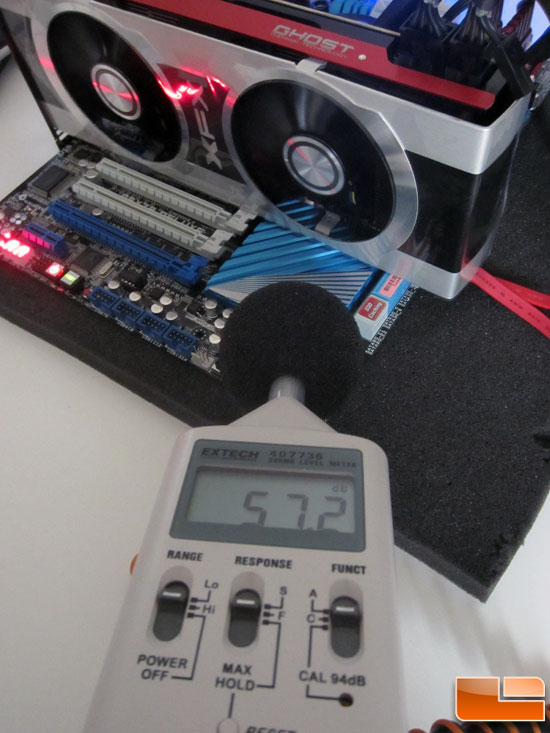
We recently upgraded our sound meter to an Extech sound level meter with 1.5dB accuracy that meets Type 2 standards. This meter ranges from 35dB to 90dB on the low measurement range, which is perfect for us as our test room usually averages around 38dB. We measure the sound level two inches above the corner of the motherboard with ‘A’ frequency weighting. The microphone wind cover is used to make sure no wind is blowing across the microphone, which would seriously throw off the data.

The water pump on our water cooler is starting to grind, so we switched CPU Coolers and started our chart over for this review. The EVGA GeForce GTX 670 SC was quieter than the NVIDIA GeForce GTX 670 due to what we think are different fan profiles and the more free flowing exhaust bracket. Pretty impressive difference for something so simple. Both EVGA GeForce GTX 670 cards are quieter than the GeFroce GTX 580 reference design.
NVIDIA GeForce GTX 670 Furmark:
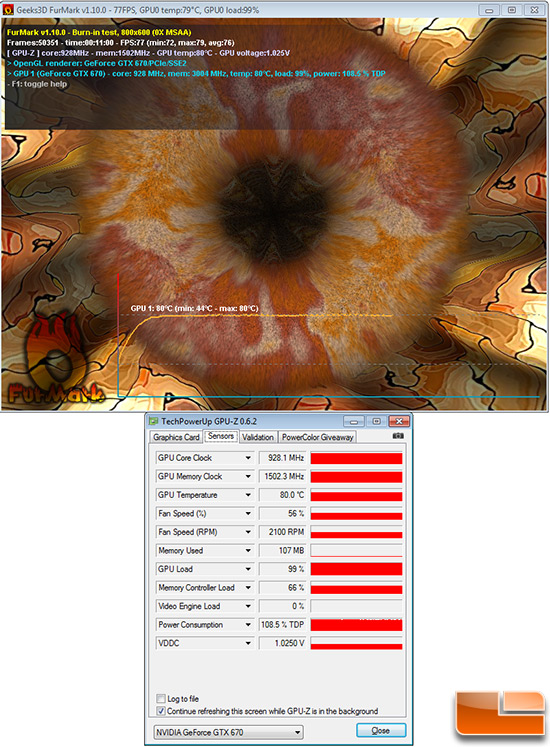
EVGA GeForce GTX 670 SC Furmark:
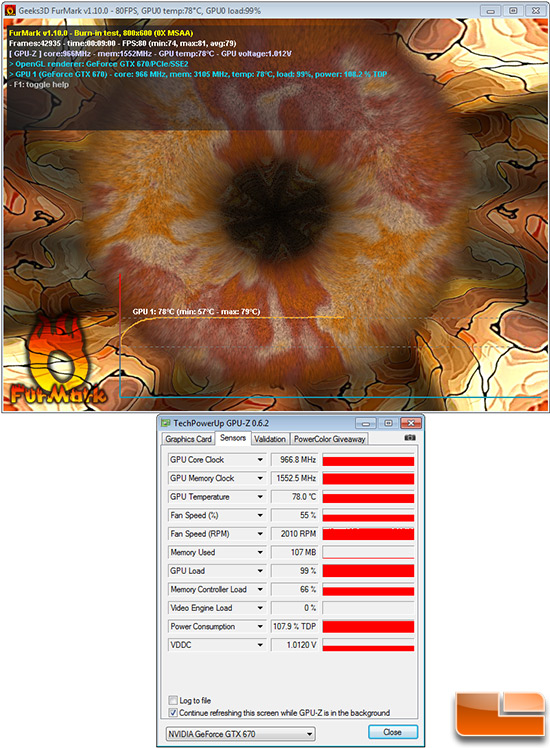

Comments are closed.